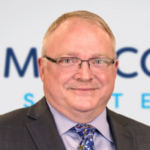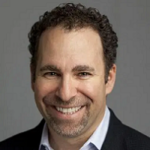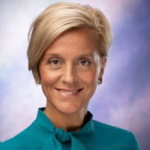Physician burnout has economic costs as well as financial costs associated with staff turnover, lost revenue, decreased productivity and risks to the organization from lower quality of care and potential for more frequent medical errors, says the practice transformation research from the AMA.
Their seminal research on physician burnout has shaped other collective understanding of its underlying causes, drivers of burnout, and the impact burnout has on physicians, patients and health care organizations. In collaboration with health care systems, the AMA’s research efforts are aimed at delivering evidence-based, actionable solutions to increase professional well-being.
What do thought leaders think about how examining a doctors’ health data can help detect burnout? Here is what they had to say when we asked them.
 Jay Anders, MD, Chief Medical Officer, Medicomp Systems
Jay Anders, MD, Chief Medical Officer, Medicomp Systems
LinkedIn: Jay Anders, MD
LinkedIn: Medicomp Systems, Inc.
Physician burnout is a major problem. Doing research on the medical records of healthcare workers to predict and or identify those who are at risk is most likely not going to be helpful. The EHR world has not paid attention to the needs of the patients or the providers and has increased burnout through poorly designed inefficient systems that do nothing to advance patient or provider health. Until we get a handle on what providers need from these systems, burnout will continue to be a major problem. Pouring through the medical records of healthcare workers to address this issue will not answer the question of burnout.
 Rhonda Collins, DNP, RN, FAAN, Chief Nursing Officer, Kontakt.io
Rhonda Collins, DNP, RN, FAAN, Chief Nursing Officer, Kontakt.io
LinkedIn: Rhonda Collins
LinkedIn: Kontakt.io
As a Chief Nursing Officer, I’ve seen firsthand how a chaotic and unsafe work environment exacerbates clinician burnout. Much of a nurse’s shift is spent on “hunting and gathering” equipment, documentation, and manual administrative tasks. According to the American Nurses Association, 69% of nurses under the age of 25 already suffer burnout. In addition to inefficient care operations, 81.6% of nurses have experienced at least one type of workplace violence within the past year. Embracing the right technology can be crucial in solving these problems. By orchestrating and streamlining care operations through tech solutions, we can significantly reduce the burdens on our clinicians, allowing them to focus on what they do best—caring for patients.
 Brent Dover, CEO, Carta Healthcare
Brent Dover, CEO, Carta Healthcare
LinkedIn: Brent Dover
LinkedIn: Carta Healthcare
For physicians, time is not just a valuable asset, but also a rare luxury. Despite prevailing skepticism surrounding the role of Artificial Intelligence in healthcare, practical applications of AI have demonstrated their potential in alleviating administrative pressures on physicians. By enhancing efficiency and streamlining processes, AI liberates physicians, allowing them to devote more time to their primary passion – patient care. By welcoming innovative solutions like AI, physicians can regain control over their time, mitigate stress, and prevent burnout.
 Lyle Berkowitz, MD, CEO, KeyCare
Lyle Berkowitz, MD, CEO, KeyCare
LinkedIn: Lyle Berkowitz, MD
LinkedIn: KeyCare
It’s no surprise that physicians continue to be burned out, and the AMA’s research further points out the problems with administrative overload and efficiency burdens. I’d suggest the solution is not going to be found in meditation nor in “making more doctors”, rather we need to embrace tech-enabled, virtual team-based approach that rewards doctors for managing a larger panel size rather than seeing a high volume of patients in their clinic. If done correctly, this would mean decreased patients seen in the office, but increased access to the PCP and their team overall – with a significant amount of care being done via automation and virtual teams. Imagine if we could pay PCPs more while letting them focus on seeing a smaller amount of patients where they can make a big difference, and be leaders of their own team!
 Piotr Orzechowski, CEO, Infermedica
Piotr Orzechowski, CEO, Infermedica
LinkedIn: Piotr Orzechowski
LinkedIn: Infermedica
The AMA’s research on physician burnout highlights the urgency of this issue. By focusing on reducing administrative burdens, which impact both finances and patient care, the AMA provides actionable solutions for healthcare organizations. Addressing the root causes of burnout and creating supportive environments for physicians helps ensure they continue to deliver high-quality care. This approach not only benefits patients but also contributes to a more sustainable future for our healthcare system.
 Stephanie Lahr, MD, CHCIO, President, Artisight
Stephanie Lahr, MD, CHCIO, President, Artisight
LinkedIn: Stephanie Lahr, MD, CHCIO
LinkedIn: Artisight
I believe wholeheartedly that technology can have a significant impact on alleviating provider burnout and allowing physicians to focus on what they love – treating patients. However, it’s crucial that we tread lightly when collecting data, no matter how altruistic the intentions. With the proper guardrails in place, the new AMA policy has potential to make a difference.
 Mary Russell, MJ, BS, RN, Sr. Director, Clinical Services, CliniComp
Mary Russell, MJ, BS, RN, Sr. Director, Clinical Services, CliniComp
LinkedIn: Mary Russell
LinkedIn: CliniComp
Addressing healthcare provider burnout requires innovative solutions that don’t add to their burden. While the AMA’s proposed research on personal health data is intriguing, it risks increasing the administrative load on providers. The real issue lies in the excessive bureaucratic tasks and RVU-based compensation models, which exacerbate burnout. By minimizing charting requirements and leveraging modern EHRs with AI advancements, we can alleviate stress and improve overall well-being. Establishing a clearly defined minimum data set for patient conditions and procedures will ensure quality care and sustainable reimbursement without redundant documentation.
 Colin Banas, M.D., M.H.A., Chief Medical Officer, DrFirst
Colin Banas, M.D., M.H.A., Chief Medical Officer, DrFirst
LinkedIn: Colin Banas
LinkedIn: DrFirst, Inc.
The idea that we need physiological data to understand that clinicians are becoming burned out and leaving the practice of medicine is simply delaying a solution to the problem. Time spent in analysis would be better spent addressing the leading drivers of burnout; namely documentation burden and administrative bureaucracy. Ideally payers, professional organizations and providers would move past “whether” and get immediately to “how,” by working together on real policy change to eliminate the need for the administrative demands that drive burnout. In the meantime, as a coping mechanism, we need clinically vetted AI that can handle necessary documentation with greater efficiency, less overhead, and a lower risk of unintended biases than what most commercially available AI currently offers.
 Kim Perry, Chief Growth Officer, emtelligent
Kim Perry, Chief Growth Officer, emtelligent
LinkedIn: Kim Perry
LinkedIn: emtelligent
Physician burnout is a critical issue in healthcare. Fortunately, new AI tools purpose-built for today’s dynamic care environments are rapidly emerging to mitigate clinician burden. The most advanced and mature technologies use medically aligned natural language processing (NLP) that significantly alleviates burnout by automatically analyzing vast amounts of unstructured data in EHRs. These capabilities can empower clinicians with relevant information at the point of care, enable the escalation of critical results or missed follow-ups, and power virtual assistants that interact directly with clinicians to enhance decision-making – all saving valuable time and supporting care teams as they focus on their top priority: caring for patients.
